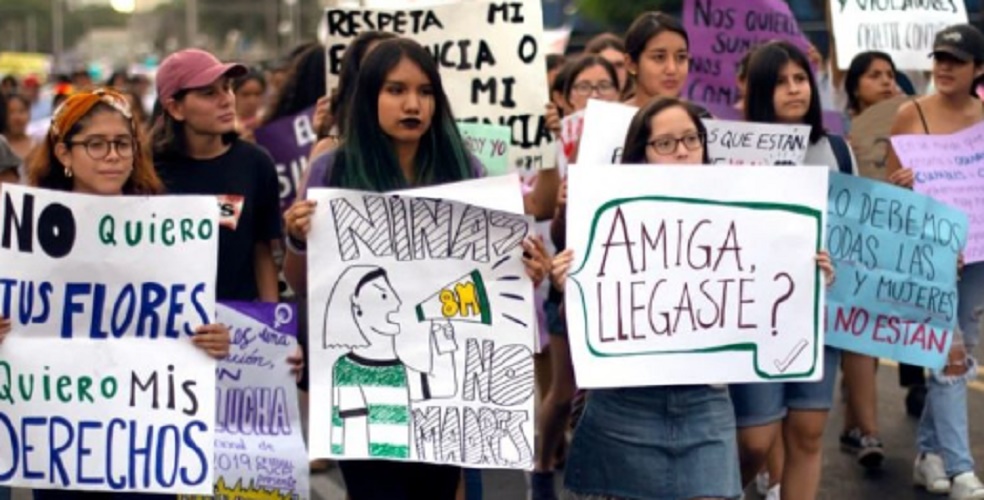What is a feminicide?
We explain what feminicide or femicide is, its causes and its relationship with machismo. In addition, the situation of feminicides in Mexico.
-
What is a feminicide?
When we talk about feminicide or femicide, we mean the murder of a woman simply because she is a woman . It is a hate crime, which occurs within the framework of gender-based violence , that is, the subjugation of cruel, cruel or painful treatment of an individual motivated by their gender or sexual orientation.
In fact, feminicide is often accompanied by hostile attitudes, beatings, torture, rape and other criminal behavior against women and girls. It is usually considered part of the set of hate crimes motivated by gender violence , legislated according to the same legal order as the murders of homosexuals or transgender people.
On the other hand, it is part of a social and political reading that highlights the patriarchal order of societies , which subjects women to a secondary place with respect to men. The different schools of feminism , in that sense, play an important role in the visibility of the cultural context that allows, fosters and tolerates femicide.
Femicide is the most extreme expression of machismo or the so-called rape culture. In the specific case of femicide, the tolerance of violence towards women, which also includes rape, discrimination and physical violence against women, especially if they occur within the framework of an affective relationship are evident.
-
Feminicide or femicide?
Although both formulas are commonly acceptable , and both are registered in the Spanish Language Dictionary of the RAE, preference is usually given to the first term, given that the second betrays its origin as anglicism (loan of English femicide ).
However, there are those who attribute to the first term a more general significance, linked to the term genocide , and go on to mean a significant amount of femicides produced in the same country without the State taking action on the matter or even making the crime committed visible. .
-
Origin of the term feminicide

The term feminicide was coined by South African feminist activist and writer Diana Russell , who has dedicated her life to making visible and combating gender inequalities. This term was defined as ” the murder of women by men motivated by hatred, contempt, pleasure or sense of possession towards women .”
Russell herself explains that “it represents the end of a continuum of anti-Flemish terror that includes a variety of verbal and physical abuse, such as rape, torture, sexual slavery (particularly by prostitution), incestuous or extra-family child sexual abuse, physical and emotional beatings “
The term has a background in English since the early nineteenth century, but began to be used popularly since 1976 when Russell used it before the International Court of Crimes against Women.
Since then it was used extensively in the 1990s and was also introduced to Spanish, following the visibility of the mass murders of women in Ciudad Juarez, on the border between Mexico and the United States.
-
Types of Femicide
It usually distinguishes between two forms of femicide:
- Intimate femicide . The one that occurs in the context of a relationship, current or past: women killed by their husbands, boyfriends, ex-husbands or ex-boyfriends. It is also the case if the crime is committed by parents, uncles, siblings or other relatives .
- Femicide not intimate . The one that occurs without a sentimental relationship of any kind between the victim and the murderer, nor is there a relationship between them.
However, it is also possible to talk about other categories such as lesbicide , when it comes to crimes against homosexual women, committed as punishment for their sexual choice; or also of transfemicide , when it comes to the murder of a trans (or transsexual) woman for the simple reason of being.
-
Causes of Femicide
It is not simple to give the causes of the existence of feminicide in today’s society . Broadly speaking, the most logical explanation points to a patriarchal culture that has dominated most human societies since ancient times, and according to which it was usual to consider women as second-class citizens, spoils of war and part of the heritage of mens.
In Athenian democracy , for example, neither women nor slaves could participate in public decisions. In modern western democracy, the female vote did not take place until the end of the 19th century, and thanks to the struggle of the suffragists.
In some Eastern societies, women must hide from the public eye through veils or special costumes. In addition, in some cases she is subject to her father’s final will, and then to be subject to her husband’s.
The critical current of feminism has alerted and fought the macho culture for more than a century, making important advances in the legal recognition of women, but still far from a panorama of equality.
In that sense, feminicides are part of the attempts of the patriarchal culture to regain their dominance , that is, they are criminal attempts to subject women to a situation of obedience, submission or defenselessness against men.
There are also those who accuse the abundance of testosterone in man as co-responsible for their violent attitudes, especially in those devoid of a formal education that counterbalances their impulses. There is much debate about it yet.
-
Feminicide in Mexico

Mexico has been a sadly bad case in terms of feminicide since the mass murders of women of women in Ciudad Juárez were made public in 1993 .
In 2009, the Inter-American Court of Human Rights sanctioned against the Mexican State, holding it liable for not having taken any type of action that would provide justice to the victims and their families, especially those of Claudia Ivette González, Esmeralda Herrera Monreal and Laura Berenice Ramos .
Perhaps as a consequence, in 2012 Mexico incorporated the crime of feminicide into the penal code , being the first country that proposed the criminalization of the crime.
It is the most active country in the fight against this crime. However, in 2016, 1678 missing young people were quantified, 150 of them minors, which led to decreeing alert status in the states of Guerrero, Michoacán, Chihuahua, Jalisco and Oaxaca.





